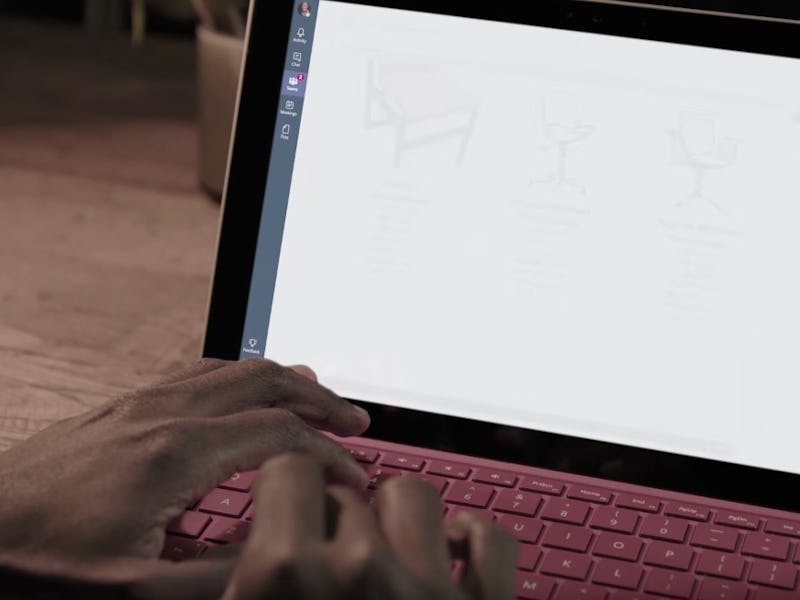Microsoft Debuts Teams, Its Slack Rival: 5 Key Differences
Will Slack believers convert to Microsoft's Teams?

On Wednesday Microsoft finally released its hyped Teams software, a messaging system that wants to take over your office. It aims to rival Slack, the popular messaging app that has transitioned from startup favorite to being used in thousands of offices, even becoming a social tool for friends. While Slack has already released a full-page ad in The New York Times shading/welcoming its new competitor, the strictly-business design of Teams does have some distinct differences from Slack that are worth noting.
1) You Get To Use Microsoft Products In One Place
If this seems obvious it’s because it is. At this early stage, it seems Microsoft’s biggest selling point is that Teams allows you to incorporate all its other products in one place. For example, its calling will be powered by Microsoft-owned Skype. But Slack has a calling feature as well and it works pretty seamlessly with the system — you can literally just call a channel and anyone there can accept the invite.
2) Customization
Where Microsoft’s products do come in handy is with the product’s aim to be highly customizable. Yes, Slack offers 750 applications, but they’re more oriented around productivity than production. In Slack you can drop in a document — in Teams, you can add an Excel tab and actively comment and collaborate on a spreadsheet in real time:
You can upload, collaborate, and comment on documents.
The easily toggable tabs allow you to actually store information in a form other than messages that clutter up a channel. And because it’s all cloud-based, you can access those docs outside of Teams too. Basically it’s Google Drive but with a better chat feature.
3) Different Bots
Undeterred by its shaky history with bots, Microsoft is promising users the likes of “WhoBot,” which searches for coworkers based on the context of the questions you ask. Slack has also promised A.I.-based bots in the future but it seems like Microsoft might have the advantage in this domain. Like Slack, Microsoft Teams is open to third-party developers so you can bet on seeing a lot more bots in the future.
4) Threaded Conversations
This is a feature that Slack users have been wanting for years. Of the features that make Teams a contender, threaded conversations are first on that list. Slack is great for ten people typing at you at once, but it’s pretty hard to keep track of things once they’ve been posted. Not to mention when a clueless coworker pops in and disrupts a conversation with a new tangent. Instead of just tagging your coworkers or messaging into the abyss, Microsoft allows you to actually respond to a post. It looks a bit like the commenting feature on Facebook:
5) It’s kind of boring
In its ad shading Teams, Slack said a good app “requires a degree of thoughtfulness and craftsmanship” to reach cult status. But Slack also is very distracting and looks like a candy store. While it’s yet to be seen if Teams will actually catch on, it seems to lack the same fun design that made Slack addictive in the first place. But that might be a good thing. As Slack also noted, it’s the users that make the platform, so Teams still has a chance.
Here’s a video released by Microsoft on Wednesday:
And we couldn’t let you out of here without that full-page advertisement in the New York Times:
This photo, shared by Slack co-founder Stewart Butterfield.